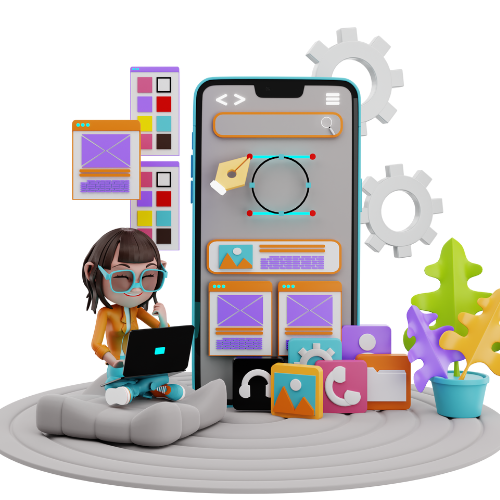What is a Digital Transformation Framework?
A Digital Transformation Framework is a systematic roadmap that organizations use to integrate digital technologies into all business functions in a seamless manner. It leads organizations through process transformation, customer experience, operations, and cultural transformation, rendering them competitive in the fast-evolving digital economy. Instead of ad hoc technology upgrades, a digital transformation framework enables technological adoption to be harmonized with business goals in the long term. From cloud adoption, process automation, to leveraging data for business decision-making, the framework enables every step to yield concrete outcomes.
Why We Require a Digital Transformation Framework
With the era of hyper-digitalization, organizations are under pressure to transform. A digital transformation framework gives direction and clarity through the transformation. It prevents expensive trial-and-error by presenting a structured approach to innovation. It keeps digital initiatives aligned with the overall mission and vision of the company, promotes improved inter-departmental coordination, and guarantees ROI. It also minimizes the risk of failure, which is inevitable with unstructured digital transformations. Without a framework, companies invest in technologies that don’t scale or don’t integrate with current systems and result in inefficiencies and losses.
Major Components of a Digital Transformation Framework
A strong digital transformation model usually has six pillars of strength:
Leadership & Culture – Change starts from the top. Change must be guided by leaders and cultivated through a digital-first culture within employees.
Customer Experience – Putting the customer at the center of digital activity, from targeted marketing to omni-channel customer service.
Operations & Processes – Applying automation, artificial intelligence, and cloud computing to simplify process and reduce cost.
Data & Analytics – Deciding with data by collecting, analyzing, and responding to real-time data.
Technology Infrastructure – Choosing scalable and secure software like cloud platforms, CRM, and IoT systems.
Governance & Compliance – Complying with cybersecurity, data privacy, and industry compliance.
These factors combine to generate a future-proof digital business plan.
Popular Digital Transformation Frameworks
A number of international consulting companies developed their own frameworks that organizations can use or adapt:
McKinsey 7S Framework is focused on the alignment of seven in-house elements: strategy, structure, systems, shared values, style, staff, and skills.
Capgemini Digital Transformation Framework is centered on customer experience, business models, and operating processes.
MIT’s Framework bridges digital capability with leadership intensity to drive transformation success.
Deloitte’s Digital Maturity Model helps companies identify their current digital stage and create future steps.
These models give you templates that reduce guessing and allow quicker implementation.
How to Create a Digital Transformation Framework
Developing your own framework is a process of steps:
Take stock of your situation today – Where is your business now in digital maturity?
Define your vision and goals – What you want to achieve through digital transformation
Use the appropriate technologies – Choose technologies that are appropriate for your strategy and scalable.
Re-engineer processes – Streamline and automate processes to maximize efficiency.
Upskill your people – Train your teams to embrace and leverage digital tools.
Phase-wise roll out – Pilot projects first, monitor the outcomes, and scale up.
Measure and adjust – Use KPIs to track progress and then adjust accordingly.
Challenges in Digital Transformation Framework Implementation
Implementing a digital transformation framework isn’t always easy. Common obstacles include:
Resistance from employees or from the leadership
Inadequate digitization skills or training
Poor integration of technology with legacy systems
Funding priorities or budget limitations
Cybersecurity risks and compliance issues
By recognizing these issues earlier, companies can plan more effectively and enhance success rates.
Benefits of a Digital Transformation Framework
With a solid base, organizations are able to realize some benefits:
Increase in innovation and product introduction
Greater customer contact and loyalty
Increased operational efficiency and reduced costs
More adaptability and responsiveness to dynamic markets
Improved employee productivity and job satisfaction
Improved data protection and compliance with regulations
Most importantly, it establishes long-term digital resilience and future-readiness. Case Study: Amazon’s Digital Framework in Action Amazon is a global case study of how digital business models drive growth. It’s data-driven decision-making, customer-centric design, automated business processes, and continuous innovation. Its cloud business, AWS, was no accident — it was the outcome of a well-aligned, long-term strategy. Similarly, Tata Consultancy Services (TCS) employs a digital core model to integrate AI, analytics, and cloud across industries. These cases demonstrate the real impact of strategic digital transformation. Conclusion A digital transformation framework is not a buzz word — it’s a business necessity in 2025 and beyond. Startup or enterprise, having a framework in hand enables you to scale faster, lower risk, and stay competitive in a digital economy. The secret is to choose the right pieces, set well-defined goals, and move with velocity. If you’re starting out, begin with an assessment of your current digital maturity and build a roadmap over time that’s tailored to your company’s needs.

Tags:

No Responses